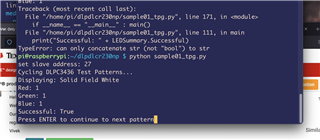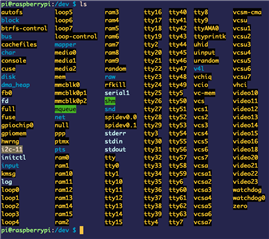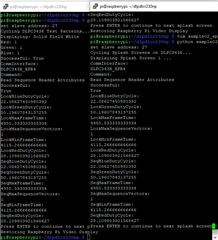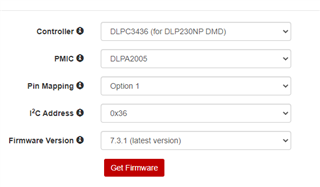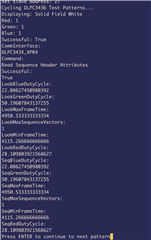Other Parts Discussed in Thread: DLPC3436
We just started working with a DLPDLCR230NPEVM and started off by running the python scripts. The sample02_splash.py is working fantastically - all of the colors are vivid and bright. However, once we attempt to display the raspberry pi desktop or an .mp4 from the Rpi, the image shows up all green. It seems that only the green LED is activated when displaying directly from the Rpi. What might be the reason for this?
As I mentioned, all of the LED's are activated for the "splash" screen sample. However, the RED and BLUE LED's are not activated for several of the other sample python scripts. For example, "sample01_tpg.py" will show an all green screen when "white" is listed as being displayed. Most of the display tests only show green, or show black when either Red or Blue are intended to be displayed. Notably, the"actuator" test seems to display correctly, with all of the colors (RGB) showing within each pixel. Also notably, when sample03_display.py is run, all of the test colors for "Cycling Image Curtain Settings" are correct. RGB, Cyan, Magenta, etc all fill the screen. Then lastly, when sample05_led.py is run, the Red and Blue tests do have visible light, it's just not filling any part of the screen like with the green test and what is visible is incredibly dim.
We do intend to use a Raspberry Pi Zero W 2 in place of the 4B+, however we have tested with both the Zero and the 4B+ and the green LED issue remains the exact same (we simply replaced microSD card). The Rpi Zero W 2 is connected via a soldered female header and 4B+ is connected via the header connector that was provided with the EVM.
Example of Splash Screen displaying with all colors:
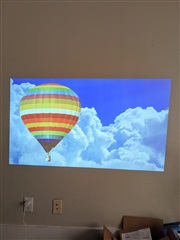
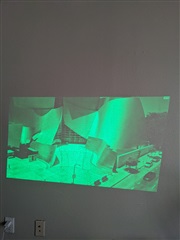
sample01 - "Displaying: Solid Field White":

"Actuator Test Pattern"
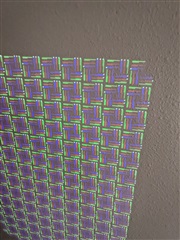
config.txt:
# For more options and information see # http://rpf.io/configtxt # Some settings may impact device functionality. See link above for details # ######################################### # DO NOT MODIFY THE LINES BELOW THIS POINT # ######################################### # uncomment if you get no picture on HDMI for a default "safe" mode #hdmi_safe=1 # uncomment this if your display has a black border of unused pixels visible # and your display can output without overscan disable_overscan=1 # uncomment the following to adjust overscan. Use positive numbers if console # goes off screen, and negative if there is too much border #overscan_left=16 #overscan_right=16 #overscan_top=16 #overscan_bottom=16 # uncomment to force a console size. By default it will be display's size minus # overscan. #framebuffer_width=1280 #framebuffer_height=720 # uncomment if hdmi display is not detected and composite is being output hdmi_force_hotplug=1 # uncomment to force a specific HDMI mode (this will force VGA) hdmi_group=2 hdmi_mode=82 # uncomment to force a HDMI mode rather than DVI. This can make audio work in # DMT (computer monitor) modes #hdmi_drive=2 # uncomment to increase signal to HDMI, if you have interference, blanking, or # no display config_hdmi_boost=4 # uncomment for composite PAL #sdtv_mode=2 #uncomment to overclock the arm. 700 MHz is the default. #arm_freq=800 # Additional overlays and parameters are documented /boot/overlays/README # Enable audio (loads snd_bcm2835) dtparam=audio=on # Uncomment this to enable infrared communication. #dtoverlay=gpio-ir,gpio_pin=17 #dtoverlay=gpio-ir-tx,gpio_pin=18 # ######################################### # DO NOT MODIFY THE LINES ABOVE THIS POINT # ######################################### # Uncomment some or all of these to enable the optional hardware interfaces #dtparam=i2c_arm=on #dtparam=i2s=on dtparam=spi=on # Configure Raspberry PI for SSH over USB dtoverlay=dwc2 # Configure I2C on GPIO Pins #22 and #23 dtoverlay=i2c-gpio,i2c-gpio_sda=23,i2c_gpio_scl=22,i2c_gpio_delay_us=2 # Configure DPI on GPIO Pins #0 through #21 gpio=0=op gpio=0=pn gpio=1-27=ip gpio=1-27=pn # Enable DPI18 Overlay enable_dpi_lcd=1 display_default_lcd=1 dpi_group=2 dpi_mode=87 # Configure DPI Video Timings # RGB 666 CFG 1 (MODE 5) dpi_output_format=458773 # 58 Hz Timings (Low-End Spec) # Works at GPIO DRIVE 5-7 hdmi_timings=1920 0 20 10 10 1080 0 10 10 10 0 0 0 58 0 125000000 3 # NOTE: GPIO PINS #24 - #27 ARE DRIVEN SEPARATELY BY WiringPi SOFTWARE [pi4] # Enable DRM VC4 V3D driver on top of the dispmanx display stack #dtoverlay=vc4-fkms-v3d #max_framebuffers=2 [all] #dtoverlay=vc4-fkms-v3d
The power supply that we are using is from a Canakit, 5.1V 3.5A, which is within the recommended range listed on the EVM user manual. Additionally, as far as I can tell, this would not explain why the colors show for the stills, and not the Rpi interface.
Andrew



